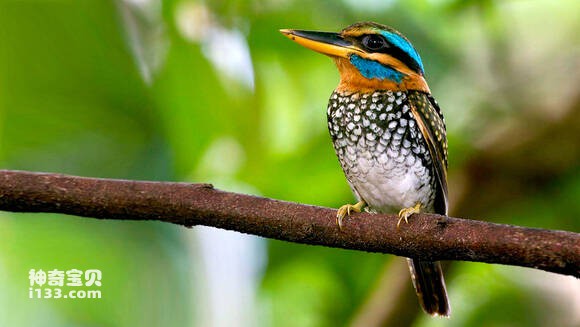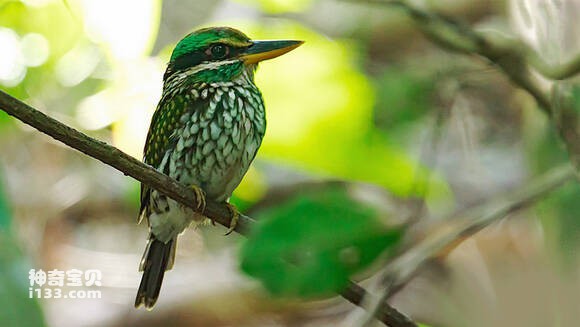Actenoides lindsayi
IUCN
LCBasic Information
Scientific classification
- name:Actenoides lindsayi
- Scientific Name:Actenoides lindsayi, Spotted wood kingfisher
- Outline:Climbing birds
- Family:
Vital signs
- length:No textual research information is available
- Weight:No textual research information is available
- lifetime:No textual research information is available
Feature
It's a Filipino bird
Distribution and Habitat
It is found in the Philippines.
It usually inhabits dense forests and riverbanks near water.
Appearance
It is a very beautiful kingfisher with scaly brown plumage and slightly darker wings and back. It has an orange-red forehead and collar, a wide black eye stripe, bright blue whiskers, a dark gray upper part of the beak, and a yellow lower part.
The mouth is thick and long like a chisel, the base is wider, the mouth peak is straight, the peak ridge is round, there is no nasal groove on both sides; Wing circle, the first primary feather is equal or slightly shorter than the seventh primary feather, and the second, third, and fourth are nearly equal in length; Primary feather base with white spots; The tail is round.
Details
Actenoides lindsayi, Spotted wood kingfisher, has two subspecies.

The emerald is generally alone or in a couple to hunt together, like most forest hunting kingfishers, is completely carnivorous. Often searching for prey in leaves or dirt. The main diet is invertebrates such as crickets, spiders, scorpions, and snails. It also eats small vertebrates such as small fish, small snakes and lizards.

Banlin emerald nest on the earth cliff or river dyke, with the mouth digging tunnel type cave for the nest, 60 cm deep, 20 cm wide, 10 cm high long, oval. These caves are generally bare of bedding. The eggs are laid directly on the nest ground. Some also drill holes in tree trunks for nests. Oval, pure white, about 29.4×26.2 mm in size.
Listed in the International Union for Conservation of Nature (IUCN) ver 3.1:2008 Red List of Birds: Not threatened.
Protect wild animals and eliminate wild meat.
Maintaining ecological balance is everyone's responsibility!








